Bottom sampling
Type of resources
Topics
Keywords
Contact for the resource
Provided by
Years
Formats
Representation types
Update frequencies
Scale
-
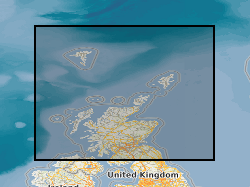
The data consist of the results of geotechnical testing carried out at various depth intervals on shallow cores or boreholes collected BGS from the UK Continental Shelf. The bulk of the data north of 56N are in digital form and result from testing carried out on board survey vessels using hand-held test equipment (penetrometers and shear vanes). These values are averaged for each test interval, and are expressed in kiloPascals. There are approximately 6000 test results in the data set. Some more detailed test information, in non-digital and report form is held for selected sites. Also for most sites where digital data is not available, geological descriptions of core material will also contains semi-quantitative information on the stiffness of the material. Geotechnical knowledge is required to understand and interpret the results if they are to be used as a basis for engineering studies. Core material are managed as part of the BGS Materials collection and are available for examination, testing or subsampling. The data are stored as part of the National Geoscience Data Centre (NGDC) and the Marine Environmental Data and Information Network (MEDIN) Data Archive Centre (DAC) for Geology and Geophysics. Data are delivered via BGS Offshore GeoIndex www.bgs.ac.uk/GeoIndex/offshore.htm geotechnical layers. Reference: Fannin, NGT. (1989) Offshore Investigations 1966-87. British Geological Survey Technical Report WB/89/2, British Geological Survey.
-
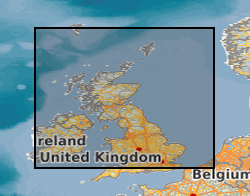
The concentrations of up to 30 trace elements in approximately 9,000 sea-bed samples from the UK Continental Shelf were determined by BGS using a variety of analytical techniques. In some cases samples were tested using more than one method. The analyses were carried out on freeze-dried samples of the sand and mud fractions of the samples. The data are stored as part of the National Geoscience Data Centre (NGDC) and the Marine Environmental Data and Information Network (MEDIN) Data Archive Centre (DAC) for Geology and Geophysics. Data are delivered via the BGS Offshore GeoIndex www.bgs.ac.uk/GeoIndex/offshore.htm geochemical layers. References: Stevenson, A G (2001) Metal concentrations in marine sediments around Scotland: a baseline for environmental studies, Elsevier Science; Stevenson, A G et al (1995) The geochemistry of sea-bed sediments of the United Kingdom Continental Shelf : the North Sea, Hebrides and West Shetland shelves, and the Malin-Hebrides sea area (http://nora.nerc.ac.uk/507899/).
-
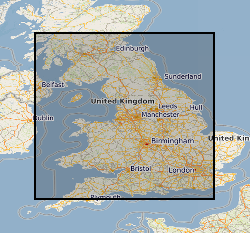
This dataset comprises data from Wessex Archaeology surveys which were conducted over various wreck sites between 2003 and 2010. Three of these datasets were acquired in English waters, one in Welsh waters and one in Scottish waters. The geology and geophysics component of the data are archived by British Geological Survey (BGS) in the Marine Environmental data and Information Network (MEDIN) Data Archive Centre (DAC) for Geology and Geophysics. The data include multibeam echosounder, single-beam echosounder, sidescan sonar, sub-bottom profiler, magnetometer, and geological data (vibrocore logs and photos). Data were also provided to other archive centres as appropriate - UKHO (bathymetry), Royal Commission Ancient and Historic Monuments Wales (geophysics), Royal Commission on the Ancient and Historical Monuments of Scotland (geophysics and diving/ROV), Archaeology Data Service (diving/ROV). Although generated for archaeological purposes, these high quality and resolution data are capable of re-use by marine surveyors and scientists from a range of different fields. Data are delivered via the BGS Offshore GeoIndex www.bgs.ac.uk/GeoIndex/offshore.htm and additional data are available on request enquiries@bgs.ac.uk.
-
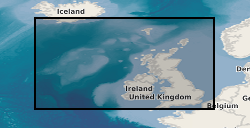
The data shows the location of seabed and sub-seabed samples collected from the UK continental shelf, held by BGS. A BGS Sample Station is a general location at which sampling with one or more equipment types, such as borehole, grab, dredge, has been used. Historically, all deployment of equipment was recorded with the same coordinates so the data shown here will often show several sets of data at the same location. Newer data will begin to show distinct locations based on an equipment type. This layer shows all the BGS Sample Station Locations, including those where the Sampling was unsuccessful. The layers below are divided into distinct equipment types, plus a separate layer for unsuccessful sampling. BGS Sample Station Locations can have a wide range of potential information available. This can vary from a basic description derived from a simple piece of paper up to a complex set of information with a number of datasets. These datasets can include particle size analysis, geotechnical parameters, detailed marine geology, geochemical analysis and others. Prices are available on further enquiry.
-
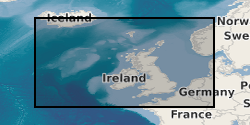
The data set consists of the results of particle size analysis (PSA) performed on approximetaly 29,000 sea-bed sediment samples collected by BGS from the UK Continental Shelf and adjacent deep water areas, mostly using sediment grabs, but also sediment corers on occasions. Measurements were also made on approximately 8000 downhole sub-samples from shallow cores and boreholes. Data from other UK organisations have also been added to the PSA dataset. The data are stored as part of the National Geoscience Data Centre (NGDC) and the Marine Environmental Data and Information Network (MEDIN) Data Archive Centre (DAC) for Geology and Geophysics. Data are delivered via the BGS Offshore GeoIndex www.bgs.ac.uk/GeoIndex/offshore.htm Seabed Sediment Data layers.
-
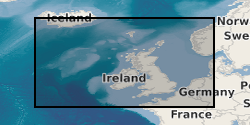
The Marine Photographs Archive held by BGS includes photographs of hydrocarbon well and (non-hydrocarbon) marine boreholes, cores and other samples. There are also photographs of the seabed and survey operations. The photos are primarily for the UKCS (United Kingdom Continental Shelf) and surrounding areas and date from the 1970s onwards. The photographs, which are a mix of prints, negatives and digital are applicable to a wide range of uses including environmental, geotechnical and geological studies. There are also some x-rays of cores.
-
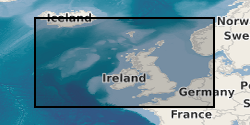
The British Geological Survey has collected over 50000 offshore samples using grabs, dredges and shallow coring devices (to a maximum depth of 6m below the sea bed). The collection also includes additional third party data and has assisted in the creation of BGS Marine Geology Maps. The distribution is variable, but in general there are sample stations spaced about every 5 - 10km across the entire UK Continental Shelf (UKCS). In some localised areas the sampling density is much higher. The data held includes digital data and analogue records (sample data sheets), plus associated physical sample material. Sample data sheets which have been scanned contain index information and geological descriptions and are more detailed from 1983 onwards. Coded geological descriptions were entered on sheets which were subsequently digitised, and this information is available for about 10,000 samples. The data also includes results of analyses such as micropalaeontological examination or age dating. Particle Size Analysis, geochemistry and geotechnical data are described in separate metadata entries. Sample material are managed as part of the BGS Materials collection and are available for examination and subsampling. The data are stored within the National Geoscience Data Centre (NGDC) and Marine Environmental Data and Information Network (MEDIN) Data Archive Centre (DAC) for Geology and Geophysics. Data are delivered via the BGS Offshore GeoIndex www.bgs.ac.uk/GeoIndex/offshore.htm.The activity and scan layers contains location information, metadata and links to scanned sample datasheets/core logs, and the geological, geotechnical, geochemical and sea-bed sediment data layers contain observations and/or measurements as digital values. The data are applicable to a wide range of uses including environmental, geotechnical and geological studies. Reference: Fannin, NGT. (1989) Offshore Investigations 1966-87. British Geological Survey Technical Report WB/89/2, British Geological Survey.
-
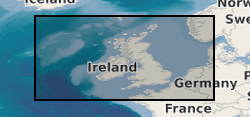
BGS has drilled almost 600 boreholes to prove seismic interpretations of the marine Quaternary geology and bedrock from the UK Continental Shelf (UKCS). The collection also includes additional third party data and has assisted in the creation of BGS Marine Geology Maps. The boreholes penetrate beneath the sea bed to depths ranging from about 10m to over 300m depending on the target depth or technical problems associated with drilling the borehole. The data includes descriptive geological core logs and data which has been captured from these and in some cases natural gamma logs. A variety of analyses has been conducted on the core material such as Particle Size Analysis, micropalaeontological, geotechnical, palaeomagnetic and age dating. Core material are managed as part of the BGS Materials collection and are available for examination and subsampling. The data are stored as part of the National Geoscience Data Centre (NGDC) and the Marine Environmental Data and Information Network (MEDIN) Data Archive Centre (DAC) for Geology and Geophysics. Data are delivered via the BGS Offshore GeoIndex http://www.bgs.ac.uk/GeoIndex/offshore.htm. The activity and scan layers contains location information, metadata and links to scanned borehole logs, and the geological data layers contain observations and/or measurements as digital values. The data are applicable to a wide range of uses including environmental, geotechnical and geological studies. Reference: Fannin, NGT. (1989) Offshore Investigations 1966-87 British Geological Survey Technical Report WB/89/02, British Geological Survey.
 NERC Data Catalogue Service
NERC Data Catalogue Service